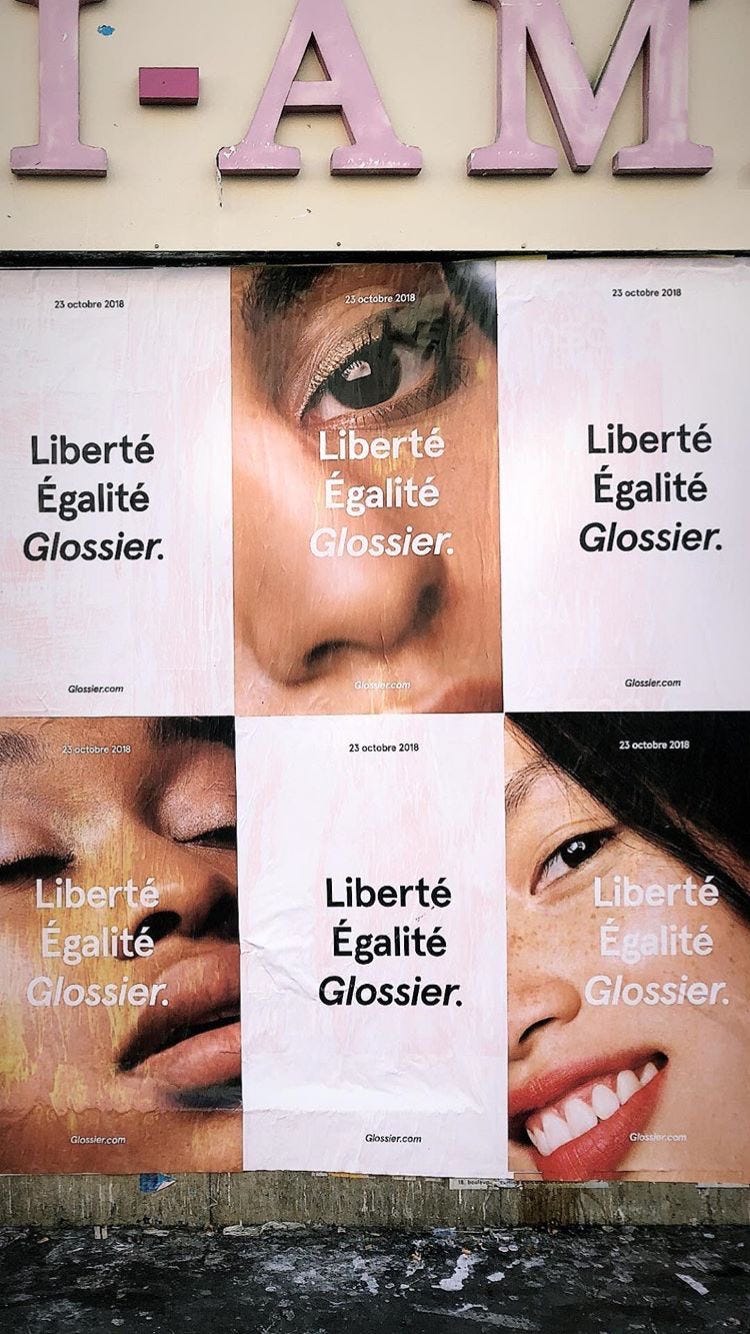How Difficult Is It To Create Foundation Shades For Darker Skin Tones?
According to the experts, it's no big task
When make-up brand Youthforia launched their controversial Shade 600 foundation last month – described by many as just being jet black face paint – it highlighted once again how behind the beauty industry is when it comes to diverse and inclusive shade ranges. Since its beginnings, the industry has prioritised and upheld white European beauty standards, and one of the ways it does so is by failing to provide products for people with darker skin tones. The beauty industry has often excused its limited shade ranges by perpetuating the idea that developing foundations for darker skin tones is inherently more complex. But is this actually the case?
In order to formulate a diverse range of foundation shades a brand must understand the complex undertones – cool, warm or neutral – that ensure the product does not appear ashy or red on darker skin. “Traditionally, creating foundations for darker skin tones could pose several challenges due to the complexity of the undertone variation that is more pronounced in darker skin tones compared to lighter skin tones,” Robin Shandler, vice president of innovation at E.L.F tells Dazed. Foundations have historically been created by combining colour pigments made up of titanium dioxide (white pigment), as well as red, yellow and black iron oxides. It comes down to the intricacies of these colour pigment combinations to formulate shades that match real skin tones.
“There is a finite range of skin tones that you can achieve with these standard colours. For lighter skin tones, the majority of shades are achievable. Whether your skin is cool (pink tones) or warm (yellower tones), these pigment colours can be blended fairly easily for a true match,” explains Kristal Goodman, head of product innovation at THG Labs. “When creating a foundation for darker skin it is not as simple as reducing the white pigment. Often the red, yellow, black approach skews to warm or yellow tones. Olive tones are particularly hard to achieve, and often darker skin tones end up being too red to suit all.”
Of course, there are several ways to go around this issue. Goodman says that adding blue, violet or even green-toned pigments to the foundation can help reduce yellow and red tones. “The key is to have a large panel of different skin types, or even a colour consultant to help create the shade range you need for your target consumers,” she says. “It is essential to assess the colour match under different light conditions, artificial and natural plus review over time as sebum levels can affect the tones and wear of the foundation.”
Economic considerations also play a role in the market’s reluctance to develop a full spectrum of shades. Producing a wide range requires substantial investment in research, development and production, as brands have to cater to a larger number of people. On top of development and production costs, “extensive research goes into developing formulas for a wide range of skin tones and undertones, including testing and adjusting shades. This research takes time, expertise and specialised equipment, all adding to the overall cost,” Goodman explains. “In terms of production, each shade is made individually. With an emulsion formulation requiring colour matching, it can take up to eight hours to make, colour match and clean down a vessel. More shades means more batches.”
These economic considerations still aren’t much of an excuse, especially for the larger corporations. Brands develop products based on perceived market demand, and there is massive demand from Black consumers. In 2023 alone, Black consumers spent over eight billion dollars on beauty products in the US. The success of brands like Fenty Beauty, which launched with 40 shades and emphasised inclusivity, demonstrated the profitability of catering to a diverse consumer base.
Things might be changing, however, thanks to AI technology. Founded by bio-chemist Adam Triantis and consumer scientist Claire Triantis, make-up brand DCYPHER Cosmetics combines colour science and AI to bring a technology that allows the creation of limitless shades, ensuring inclusivity for all skin tones. “Understanding the necessary pigments for real skin tones, including undertone and vibrancy, is central to our work,” says Triantis. “Our AI algorithms, based on real skin colours, ensure everyone can have the foundation shade they deserve, without compromises.”
The AI technology uses cameras to scan consumer skin, to capture precise data on lightness, depth, hue and chromaticity. The data is then converted by DCYPHER’s Intelligent Formulation Algorithms into a proprietary skin tone model using white, yellow, red, and blue/black pigments, resulting in a “perfectly” matched foundation shade. “Our ability to formulate shades that other brands struggle to match is rooted in our unique combination of advanced AI technology and a deep understanding of colour science. While it’s true that all foundations use the same four key pigments, the difference lies in how we leverage these pigments and our proprietary algorithms,” Triantis explains. This is game-changing for the industry, as it eases the heavy workload of developing foundation shades. It means there is less room for error, reduces the pressures in the developing and testing stages but most importantly, it allows for more consumers to have access to foundations that actually match their skin.
By embracing representation, and investing in technology and research, brands are easily able to cater to all skin tones. In fact, when a considered approach is taken, creating foundations for darker skin tones proves not so difficult at all.
Originally published for Dazed.


